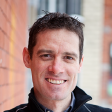
Part Two: Updates from GLOBE Conference 2016
Following last month’s GLOBE Conference in Vancouver, Energy Futures Lab Director Chad Park caught up with two members of the Energy Futures Lab Advisory Council, Tzeporah Berman and Toby Heaps, both of whom had important roles at GLOBE and its surrounding events.
The following is part two of the three-part discussion and focuses on infrastructure and policy to guide energy transition. Part one explored some of the big international developments that Tzeporah and Toby believe are changing the playing field for the global energy system, while part three focuses on specific considerations and opportunities for Alberta’s energy future.
Chad: Both Tzeporah and Toby are recognized leaders on the global stage in their respective areas of expertise – Tzeporah as a prominent environmental activist and Toby as an expert and advocate in the role of capital markets and institutional investors in sustainable development. They each have strong personal ties to Alberta and also bring a global perspective. Whether or not we agree with all of their views, I believe it is important to consider this perspective as the Energy Futures Lab ponders how Alberta will position itself and evolve in the rapidly changing global energy system.
Toby Heaps is the CEO and Co-Founder of Corporate Knights, CK Capital and the Council for Clean Capitalism. He spearheaded the first global ranking of the world’s 100 most sustainable corporations in 2005, and in 2007 coined the term “clean capitalism.” He sits on the Sustainability Accounting Standards Advisory Board and the University of Toronto’s Environment and Finance Committee. He is also is a member of the Advisory Council for the Energy Futures Lab.
Tzeporah Berman BA, MES, LLD (honoris causa) has been designing environmental campaigns and working on environmental policy in Canada and beyond for over twenty years. She is an Adjunct Professor of York University Faculty of Environmental Studies and works as a strategic advisor to a number of First Nations, environmental organizations and philanthropic foundations on climate and energy issues. Tzeporah co-chairs a small oil industry/ENGO problem solving forum in Alberta on oil sands policy and was appointed last year to the BC Government Climate Leadership Team. She is a member of the Advisory Council for the Energy Futures Lab and is the former co-director of Greenpeace International’s Global Climate and Energy Program and Co-founder of ForestEthics.
Chad: Tzeporah, you surprised a lot of people at GLOBE by the exchange you had with Dr. Michael Porter regarding his latest report on the opportunities for natural gas in the energy transition.
Tzeporah: Here’s the thing. I agree with some of Dr. Porter’s conclusions. For example, to regulate methane, to set regulations for environmental risks, and to ensure continuous improvement and compliance. The analysis is good but his math is wrong because he doesn’t take the carbon budget into consideration.
Dr. Porter’s analysis overlooks the limits needed to secure a safe climate, whether you think that’s 1.5 or 2 degrees. His analysis assumes the market will take care of that. It assumes that we can still burn gas so long as we minimize other environmental impacts. I feel like he’s avoiding the big questions of how much unconventional oil and gas development we can afford and where it should come from.
We also talked about his premise that more investment in oil and gas, the unconventional production, helps the development of a low carbon economy because it creates stronger economic conditions. My response to the panel was that gas is replacing coal, but that that’s not good enough anymore. Gas is only a transition fuel if we have a transition plan and we’ve seen a number of studies even from the US Energy Information Agency that show that higher natural gas production can lead to higher emissions levels in the US in the long term because it is displacing renewables.
I think it was clear that Dr. Porter’s paper was written before the Clean Power Plan was finalized and before the Supreme Court win on demand response and tax extension. Both of those things are huge game changers because they show that good regulations can speed the transition and we shouldn’t just rely on the market.
Toby: Most people would look at the emissions from a gas power plant and a coal power plant and see 50% less emissions from the gas power plant. It seems like it’s only half as problematic. We think gas is buying us some time, but we’re not counting the methane that we’re leaking from fracking. Actually, what we’re doing might be twice as bad in terms of emissions.
Gas used to be viewed as essential to getting off coal, but at that time we didn’t have the renewable technologies available today. Certainly, the price of solar was 5 times higher. The price of wind was probably 3 to 4 times higher. Circumstances are different now, and in a lot of jurisdictions we can leap right over gas and go straight to a renewables-dominated grid.
Chad: How do we balance these competing considerations? How could we address the need for a carbon budget while determining the role of fossil fuels in the transition?
Toby: A growing number of investors are now imposing carbon budgets on themselves and there are jurisdictions integrating carbon budgets into their frameworks for accepting institutional investment. We’re noticing that some of the more sophisticated investors, like the Norwegian Oil Fund, have identified a large group of companies as being particularly vulnerable to the energy transition.
They want to understand whether a company fits in a 2-degree world. They want to see credible business plans. There are over a 122 businesses now that have signed up to the Science Based Targets initiative. Suncor might be one of the first energy companies if they move forward with support of the shareholder resolution for a 2-degree business plan. Investors want to see that you are part of the solution, not clinging to the past. This is all going to have to be backed up by capital and R&D expenditures, and by a change in the portfolio on aggressive timelines.
Tzeporah: I’ve been having a similar conversation, but in the public policy arena. How do we make decisions about projects, like national pipelines in Canada’s new climate era? There is uncertainty about where we’re headed because we don’t have nation-wide targets. Setting these targets is hard because of the difficulty of defining a given jurisdiction or sector’s fair share of responsibility.
How do you decide yes or no on a project? One way is to look at the greenhouse gas emissions of a project, or even the potential expansion of the pool of carbon that it accesses, and use this as a climate test. The second way is to start including use and usefulness analysis in our business analysis. The National Energy Board does this, and it’s done provincially for environmental assessments as well.
That business case analysis is currently based on business as usual projections. We’re assessing projects based on whether or not they make sense in a 6-degree warming world. If we actually also do analyses consistent with a 1.5-degree world, then we’ll get different answers. We need to align our infrastructure and our decisions with up-to-date climate targets.

Chad Park is the Director of the Energy Futures Lab and Executive Director of the Natural Step Canada





